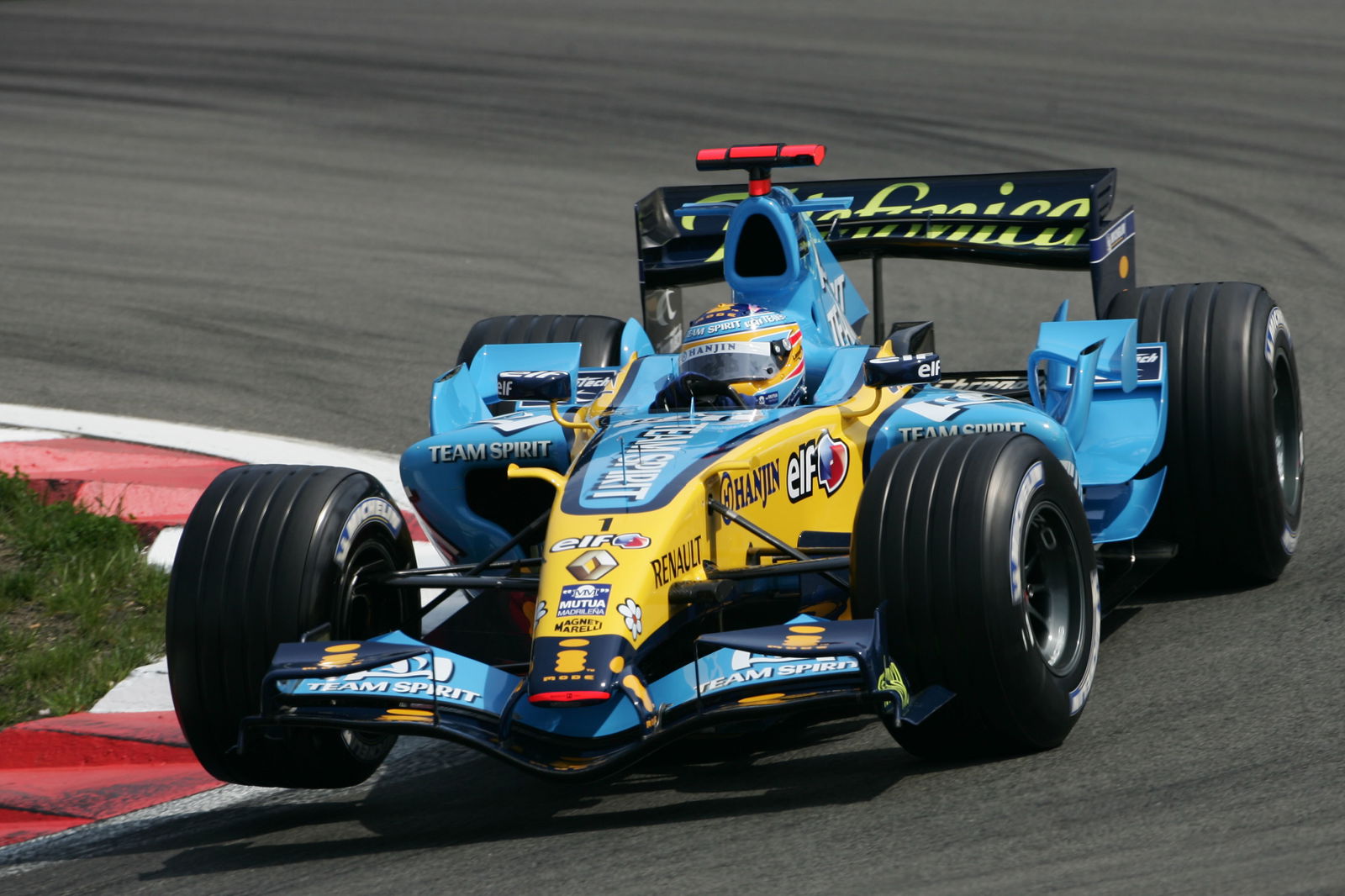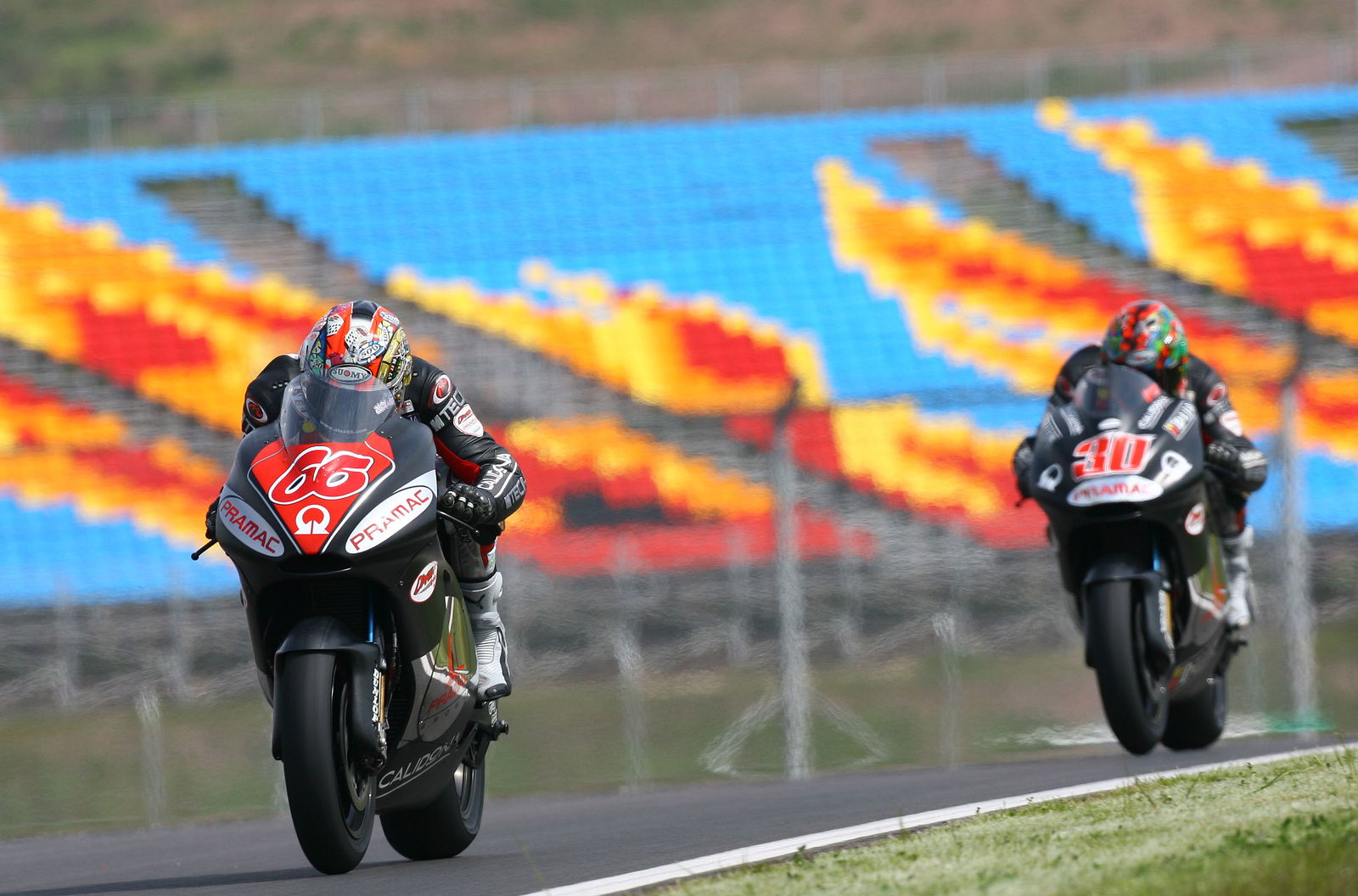Michelin: Why F1 and MotoGP don't mix.
Michelin may have won both the 2005 Formula One and MotoGP World Championships - with Renault's Fernando Alonso and Yamaha's Valentino Rossi - but the similarities between the tyres essentially begins and ends with the brand name on the side.
For, when it comes to producing tyres capable of withstanding the demands of F1 and MotoGP, there are contrasting sets of problems to solve. Even to a layman, the physical differences between Formula One and MotoGP tyres are strikingly obvious - their size and shape have nothing in common - but that's just the tip of the iceberg.

Michelin may have won both the 2005 Formula One and MotoGP World Championships - with Renault's Fernando Alonso and Yamaha's Valentino Rossi - but the similarities between the tyres essentially begins and ends with the brand name on the side.
For, when it comes to producing tyres capable of withstanding the demands of F1 and MotoGP, there are contrasting sets of problems to solve. Even to a layman, the physical differences between Formula One and MotoGP tyres are strikingly obvious - their size and shape have nothing in common - but that's just the tip of the iceberg.
"One of the main differences between MotoGP and F1 is that bikes only ever have a narrow ribbon of tread in contact with the track: their tyres are quite often asymmetrical - just like the circuits," explained Nicolas Goubert, technical director of Michelin's motorcycle racing operation. "Using this approach we can better tailor rubber to individual tracks. For instance, the left-hand side of the tread will differ from the right at a circuit where there is a significant imbalance between the number of left- and right-hand turns. In F1, of course, a much greater percentage of the tread tends to be in contact with the track."
"In Formula One, the size of the contact patch can actually vary enormously, depending upon the type of corner and the prevailing downforce levels," added Michelin's Formula One technical director Patrick Cohen. "It can even drop to the point that it is almost zero, when a front tyre on the inside of a corner is barely touching the track."
The size of the contact patch is a critical factor when it comes to generating the phenomenon known as grip. And in motorcycle racing, we might be talking something no bigger than the size of a credit card.
"Contemporary MotoGP bikes develop 240bhp and we have to transmit that to the track via a (contact patch) that is 5cm long and 10cm wide. The maximum load on a rear tyre is five times greater in F1 than in MotoGP," said Goubert. The contact patch for an F1 rear tyre is approximately 16.5cm long and 27cm wide.
Naturally, motorcycle racers lean considerably when cornering - to an awesome angle of more than 55 degrees in dry conditions. Consequently it won't always be the same part of a tyre that maintains contact with the track, but overall the loads are less dramatic than those in F1.
"That's because there is no aerodynamic influence in bike racing," confirmed Goubert. "The greatest weight a tyre has to bear will be equivalent to that of the rider and bike combined, approximately 80 and 145 kilos respectively."
In Formula One the exact opposite is true because car designers are devoted to refining aerodynamics in the interest of generating ever-faster cornering speeds.
"In F1 nowadays, rear tyres are inflated to low pressures but must be able to withstand loads of more than a tonne," said Cohen. "In some of the faster corners, this demands a very high degree of resistance from some of the internal materials. Naturally, we also have to produce casings capable of withstanding such extremes."
The MotoGP tyre regulations are much freer than those in F1 - only the width of the wheel rim is specified. As a result, Michelin takes as many as five different rear tyres and three fronts to each grand prix.
Front tyre choice varies according to riding style - Rossi and Camel Yamaha team-mate Colin Edwards may prefer one particular casing but Fortuna Honda's Marco Melandri may choose another one and Repsol Honda's Nicky Hayden something different.
Choice on that scale is unthinkable in F1, where drivers must select one of two available compounds each weekend and the rules oblige manufacturers to stick rigidly to fixed dimensions. In this domain, different chassis place contrasting loads on tyres - a figure that might vary by plus or minus 10 per cent.
In manufacturing terms, both sports require similar response times from a tyre supplier and pre-race test sessions determine the precise specifications that will be used in forthcoming events.
"The fact that bike racing tyres are often asymmetrical adds an extra degree of complication at the manufacturing stage, because the compound used at the shoulder of the tread differs from that at the centre," said Goubert.
In F1, too, tyres are often manufactured at short notice - specifications are sometimes finalised during tests that take place only a matter of days before the next grand prix.
Michelin faces stiff opposition in both fields: Bridgestone participates in F1 and MotoGP, while Dunlop is also active on two wheels. The competition is invariably fierce.
"We develop several new tyre constructions per season. Even if you have the upper hand, you can't afford to ease up - do that and you'll be behind again within a couple of months," claimed Goubert. "No matter how many wins you score during a MotoGP season, each event signifies a fresh challenge. You have to progress constantly."
The pace of development is perhaps slightly less hectic in F1, but the same principle applies. For all the obvious differences, safety remains the watchword in both F1 and MotoGP.
"Everyone should be aware that this is our number one priority," declared Goubert. "Of course we crave performance, but the most vital thing for riders and drivers is to have tyres that blend speed with safety. In MotoGP, for instance, it is impossible to predict the consequences should a rider fall. We simply can't afford to take the slightest chance."
This weekend will see Michelin, Alonso and Rossi in action at the Spanish F1 Grand Prix and Chinese MotoGP.


